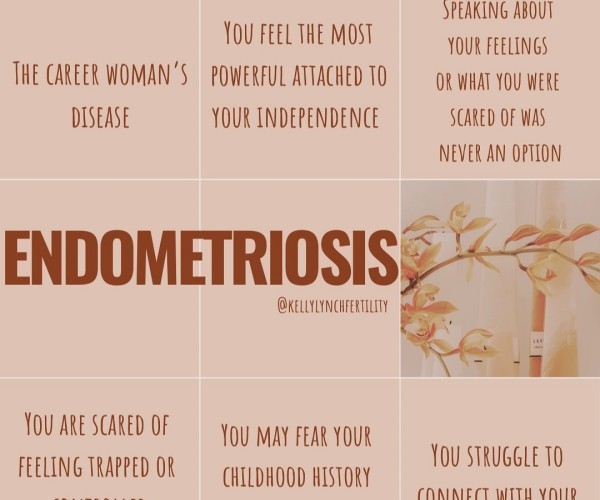Endometriosis
These growths, or endometrial implants, can be found on the ovaries, fallopian tubes, the outer surface of the uterus, and other organs within the pelvis. Here’s an in-depth look at endometriosis, including its symptoms, diagnosis, and treatment options.
Symptoms of Endometriosis
The symptoms of endometriosis can vary significantly from person to person. Common symptoms include:
- Pelvic Pain: This is the most common symptom and often correlates with menstrual periods. Pain can also occur before and after menstruation.
- Menstrual Irregularities: Heavy periods (menorrhagia) or bleeding between periods (menometrorrhagia) can occur.
- Pain with Intercourse: Pain during or after sex is common with endometriosis.
- Pain with Bowel Movements or Urination: This symptom is more prevalent during menstruation.
- Infertility: Endometriosis can be diagnosed in some women who are seeking treatment for infertility.
- Other Symptoms: Fatigue, diarrhea, constipation, bloating, and nausea, especially during menstrual periods.
Causes and Risk Factors
The exact cause of endometriosis is not fully understood, but several theories exist:
- Retrograde Menstruation: This theory suggests that menstrual blood flows backward through the fallopian tubes into the pelvic cavity instead of leaving the body, causing endometrial cells to implant outside the uterus.
- Embryonic Cell Transformation: Hormones such as estrogen may transform embryonic cells into endometrial cell implants during puberty.
- Surgical Scars: After surgeries like a hysterectomy or C-section, endometrial cells might attach to the surgical incision.
- Immune System Disorders: Problems with the immune system might make the body unable to recognize and destroy endometrial-like tissue growing outside the uterus.
Diagnosis
Diagnosing endometriosis can be challenging due to its varied symptoms, which often mimic other conditions such as ovarian cysts or irritable bowel syndrome. The diagnostic process typically includes:
- Pelvic Exam: A doctor may feel for large cysts or scars behind the uterus.
- Imaging Tests: Ultrasound, MRI, or CT scans can identify cysts associated with endometriosis.
- Laparoscopy: This minimally invasive surgical procedure allows the doctor to view the inside of the abdomen and pelvis to identify endometrial implants and obtain a biopsy for confirmation.
Treatment Options
While there is no cure for endometriosis, various treatments can help manage the symptoms:
- Pain Medication: Nonsteroidal anti-inflammatory drugs (NSAIDs) can help reduce pain and inflammation.
- Hormonal Therapy: Birth control pills, hormonal IUDs, GnRH agonists, and other hormonal treatments can reduce or eliminate menstrual flow and decrease endometrial implant growth.
- Surgery: Laparoscopic surgery can remove or destroy endometrial growths, providing significant pain relief and improving fertility chances.
- Lifestyle Changes: Regular exercise, heat application, and dietary adjustments can help manage symptoms.
- Complementary Therapies: Acupuncture, chiropractic care, and herbal supplements may offer additional relief, though these should be discussed with a healthcare provider.
Living with Endometriosis
Endometriosis is a chronic condition that can significantly impact the quality of life. Support from healthcare providers, mental health professionals, and support groups can be invaluable. Women with endometriosis should maintain regular follow-ups with their healthcare provider to manage symptoms and adjust treatment plans as necessary.
Preventing endometrios entirely is not currently possible, as the exact cause of the condition is not fully understood. However, there are some steps that may help reduce the risk of developing endometriosis or managing its symptoms:
1. Maintain a Healthy Lifestyle
- Regular Exercise: Engage in regular physical activity to help regulate hormone levels and promote overall health.
- Balanced Diet: Eat a diet rich in fruits, vegetables, whole grains, and lean proteins to support immune function and overall well-being.
2. Manage Menstrual Health
- Manage Menstrual Flow: Use sanitary products that are comfortable and change them regularly during menstruation.
- Consider Hormonal Birth Control: Some forms of hormonal birth control, such as the pill or hormonal IUD, may help regulate menstrual cycles and reduce symptoms of endometriosis.
3. Reduce Exposure to Environmental Toxins
- Avoid Environmental Estrogens: Minimize exposure to substances that may disrupt hormone balance, such as bisphenol A (BPA) found in plastics and certain pesticides.
4. Seek Early Treatment
- Promptly Address Symptoms: If you experience symptoms such as pelvic pain, painful periods, or difficulty conceiving, seek medical attention promptly for diagnosis and treatment.
5. Consider Pregnancy and Breastfeeding
- Pregnancy: Some research suggests that pregnancy and breastfeeding may temporarily reduce the risk of developing endometriosis or alleviate symptoms. However, this is not a guaranteed prevention method and should not be pursued solely for this purpose.
6. Stay Informed and Advocate for Yourself
- Educate Yourself: Learn about the signs and symptoms of endometriosis and stay informed about available treatment options.
- Advocate for Proper Diagnosis and Treatment: If you suspect you may have endometriosis, advocate for yourself by seeking out healthcare providers who are knowledgeable about the condition and who will take your symptoms seriously.
While these strategies may help reduce the risk of developing endometriosis or alleviate symptoms, it’s essential to recognize that not all cases can be prevented. If you are experiencing symptoms suggestive of endometriosis, consult with a healthcare provider for proper evaluation and management.

Preventing Endometriosis: Strategies and Tips
- Healthy Lifestyle: Maintain regular exercise and a balanced diet to support overall health and hormone regulation.
- Manage Menstrual Health: Use comfortable sanitary products, consider hormonal birth control, and seek treatment for menstrual irregularities.
- Reduce Exposure to Toxins: Minimize exposure to substances like BPA found in plastics and certain pesticides.
- Seek Early Treatment: Promptly address symptoms like pelvic pain or painful periods to seek diagnosis and treatment.
- Consider Pregnancy and Breastfeeding: While not guaranteed prevention methods, some research suggests that pregnancy and breastfeeding may temporarily reduce the risk or alleviate symptoms.
- Stay Informed and Advocate: Educate yourself about endometrios, seek knowledgeable healthcare providers, and advocate for proper diagnosis and treatment.
Although these strategies may help manage symptoms or reduce the risk, it’s important to consult with a healthcare provider for individualized guidance and treatment.
Conclusion
Endometrios is a complex and often debilitating disease that requires a comprehensive approach for effective management. Understanding the symptoms, seeking timely diagnosis, and exploring various treatment options can help those affected lead a more comfortable and fulfilling life.
Ongoing research continues to improve our understanding and management of this condition, offering hope for better treatments and, ultimately, a cure in the future.




